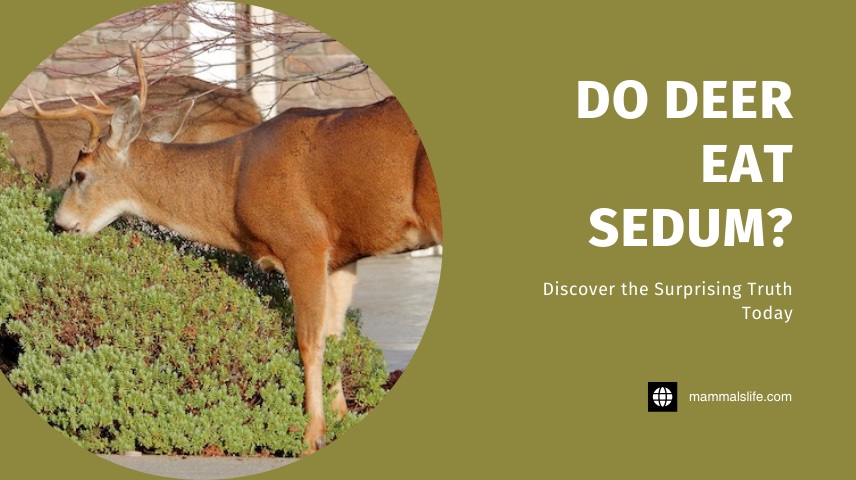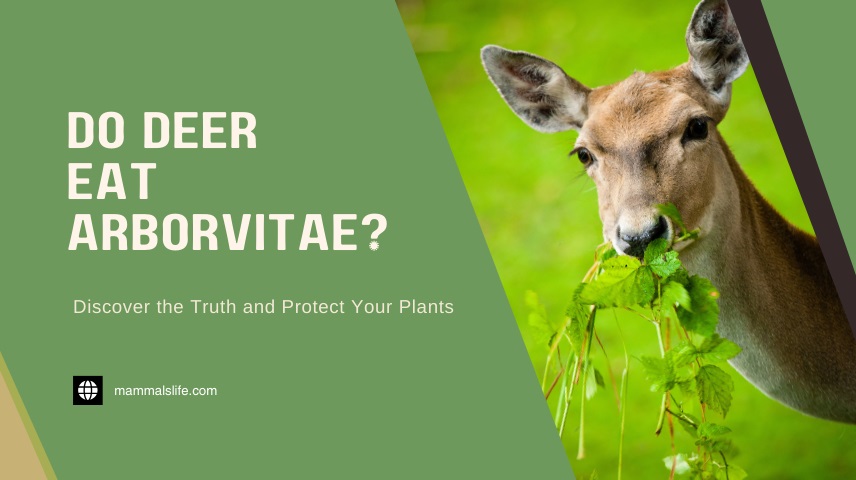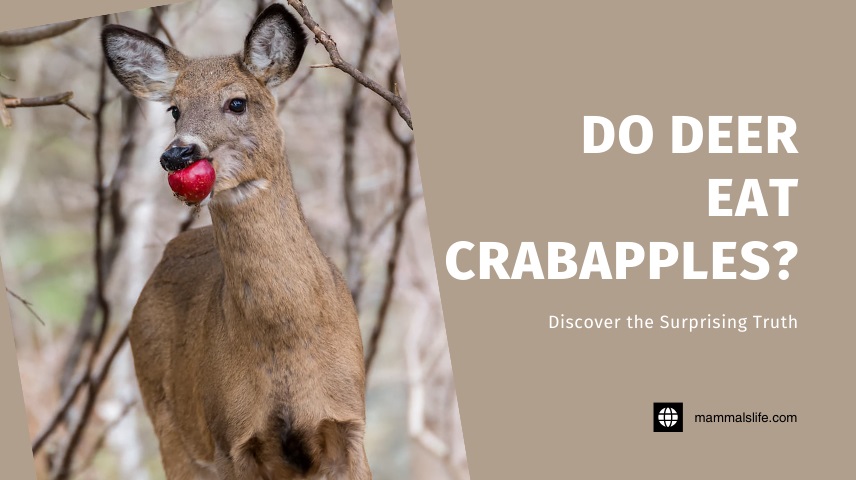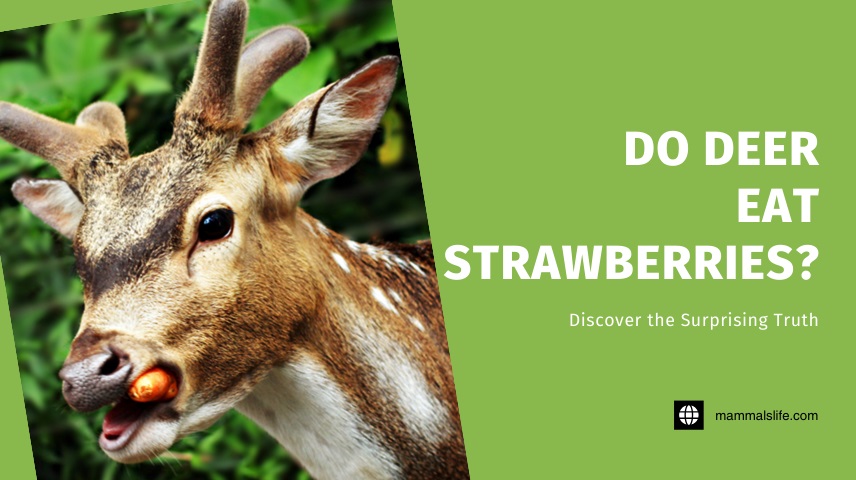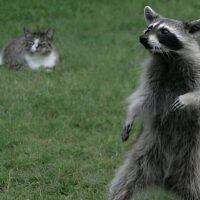Last Updated on February 22, 2025 by Mammals Life
Deer generally do not eat sedum. Sedum plants are often considered deer-resistant.
Sedum, also known as stonecrop, is a popular choice for gardeners looking for low-maintenance, drought-resistant plants. These succulents thrive in well-drained soil and full sun, making them ideal for rock gardens and borders. Sedum’s thick, fleshy leaves store water, allowing the plant to survive in arid conditions.
Their vibrant blooms attract pollinators like bees and butterflies, adding life to your garden. Because deer usually avoid eating sedum, these plants can maintain their beauty without much worry about wildlife damage. This makes sedum an excellent option for gardeners dealing with deer problems. Choose sedum for a resilient, attractive addition to your landscape.
Introduction To Sedum Plants
Sedum plants are a popular choice for many gardeners. These plants are known for their hardiness and unique beauty. They are often used in rock gardens, borders, and as ground cover. Sedum plants are succulent, meaning they store water in their leaves. This makes them drought-tolerant and easy to care for.
What Is Sedum?
Sedum is a large genus of flowering plants. It includes over 400 species. These plants belong to the Crassulaceae family. Sedum plants are also known as stonecrops. They thrive in well-drained soil and full sun. Sedum can be found in various climates and environments. Their leaves are fleshy, and their flowers can be red, yellow, or white.
Popular Sedum Varieties
There are many types of Sedum plants. Here are some popular varieties:
- Sedum ‘Autumn Joy’ – Known for its large pink flower heads.
- Sedum ‘Dragon’s Blood’ – Features deep red leaves and flowers.
- Sedum ‘Angelina’ – Has bright yellow-green foliage.
- Sedum ‘Blue Spruce’ – Looks like a small blue spruce tree.
Sedum plants offer a variety of colors and shapes. These plants attract bees and butterflies. They are also deer-resistant, making them an excellent choice for gardens.
Deer’s Dietary Habits
Deer have unique dietary habits that vary by season and location. Understanding these habits helps gardeners protect their plants, including sedum.
Typical Deer Diet
Deer are herbivores, meaning they eat plants. Their diet includes a variety of vegetation:
- Grass
- Leaves
- Twigs
- Fruits
- Nuts
In forests, deer eat tree bark and shrubs. In gardens, they might feast on vegetables and flowers. Deer prefer tender, nutrient-rich plants.
Seasonal Eating Patterns
Deer’s diet changes with the seasons to match food availability. Here’s a quick look:
| Season | Diet |
|---|---|
| Spring | New leaves, flowers, and fresh grass |
| Summer | Fruits, vegetables, and lush plants |
| Fall | Nuts, acorns, and fallen fruits |
| Winter | Bark, twigs, and evergreen foliage |
During harsh winters, deer eat almost any vegetation they find. This includes browsing on sedum if other food sources are scarce.
Do Deer Eat Sedum?
Gardeners often wonder if deer eat sedum. Sedum, also known as stonecrop, is a popular plant. It is known for its hardiness and low maintenance. But the question remains: Do deer find it tasty?
Observations And Studies
Observations show that deer usually avoid sedum. This plant has thick, succulent leaves. Deer prefer softer, leafy plants. Some studies confirm these findings. They show that deer rarely eat sedum.
Factors Influencing Deer Preferences
| Factor | Impact on Deer Eating Sedum |
|---|---|
| Availability of Other Food | If other food is scarce, deer might eat sedum. |
| Season | Deer might eat sedum more in winter. |
| Location | Deer behavior can vary by region. |
Deer preferences can change based on several factors. In spring and summer, they have many food options. In winter, food becomes scarce. In such times, deer might try eating sedum. Location also plays a role. Deer in some areas might eat sedum more often.
Gardeners can take steps to protect their sedum. They can use deer repellents. Fencing is another option. Keeping deer away ensures your sedum thrives.
Protecting Sedum From Deer
Sedum is a beautiful, hardy plant that many gardeners love. Deer also love it, which can be a problem. Protecting your sedum from deer is essential for a thriving garden.
Fencing And Barriers
One of the most effective ways to protect sedum is by using fencing. A tall fence can keep deer out of your garden. Deer can jump high, so a fence should be at least 8 feet tall.
Another option is using barriers around the plants. Netting or chicken wire can be placed around sedum to prevent deer from eating them. Make sure the barriers are secure and check them regularly.
Natural Repellents
Natural repellents can also help keep deer away from sedum. Homemade sprays with strong smells can deter deer. For example, mix garlic and hot pepper with water and spray it on the plants.
Soap bars hung around the garden can also repel deer. The strong scent of soap is unpleasant to deer. Grate the soap and sprinkle it around the sedum for extra protection.
Planting deer-resistant plants around sedum can act as a natural barrier. Examples include lavender, rosemary, and marigold. These plants have strong scents that deer do not like.
| Method | Details |
|---|---|
| Fencing | 8 feet tall, keeps deer out |
| Barriers | Netting or chicken wire, secure around plants |
| Homemade Sprays | Garlic and hot pepper mix, spray on plants |
| Soap Bars | Hang or grate around garden, strong scent repels deer |
| Deer-Resistant Plants | Lavender, rosemary, marigold, strong scents deer dislike |
Using these methods, you can protect your sedum from deer. Keep your garden beautiful and deer-free with these simple tips.
Alternative Deer-resistant Plants
Dealing with deer in your garden can be challenging. While sedum is sometimes touted as deer-resistant, it’s not always immune to deer munching. If you’re tired of deer feasting on your plants, consider alternative deer-resistant plants. These options not only protect your garden but also add variety and beauty.
Other Hardy Succulents
Hardy succulents are excellent choices for a deer-resistant garden. They require minimal care and look stunning.
- Sempervivum: Also known as hens and chicks, these plants form attractive rosettes.
- Echeveria: Known for their vibrant colors and rosette shapes.
- Agave: These spiky plants deter deer and add architectural interest.
Consider planting these succulents in sunny areas with well-drained soil.
Complementary Garden Choices
Pair your succulents with other deer-resistant plants for a cohesive garden design. Here are some great choices:
| Plant | Description |
|---|---|
| Lavender | Fragrant and beautiful purple flowers that repel deer. |
| Russian Sage | Silvery foliage and tall blue flowers, highly deer-resistant. |
| Yarrow | Clusters of tiny flowers and fern-like leaves, deer don’t like it. |
Mixing these plants with succulents creates a garden that deer avoid.
- Choose a variety of textures: Mixing different textures makes your garden more interesting.
- Plant in groups: Grouping plants together can help deter deer.
- Use mulch: Mulch helps retain soil moisture and deters weeds.
These tips help create a beautiful, deer-resistant garden that’s easy to maintain.
Frequently Asked Questions
Do Deer Eat Sedum Plants?
Yes, deer often eat sedum plants, especially during food shortages.
How To Protect Sedum From Deer?
Use deer repellents, fencing, or plant deer-resistant varieties to protect sedum.
Are All Sedum Varieties Deer-resistant?
No, not all sedum varieties are deer-resistant. Some are more attractive to deer.
Can Deer Damage Sedum Significantly?
Yes, deer can cause significant damage to sedum by eating leaves and flowers.
Conclusion
Deer do eat sedum, but its resilience makes it a good garden choice. Protect your plants with deterrents. Understanding deer behavior helps in maintaining a beautiful garden. Keep experimenting with different strategies. Your garden can thrive despite deer visits. Happy gardening!

